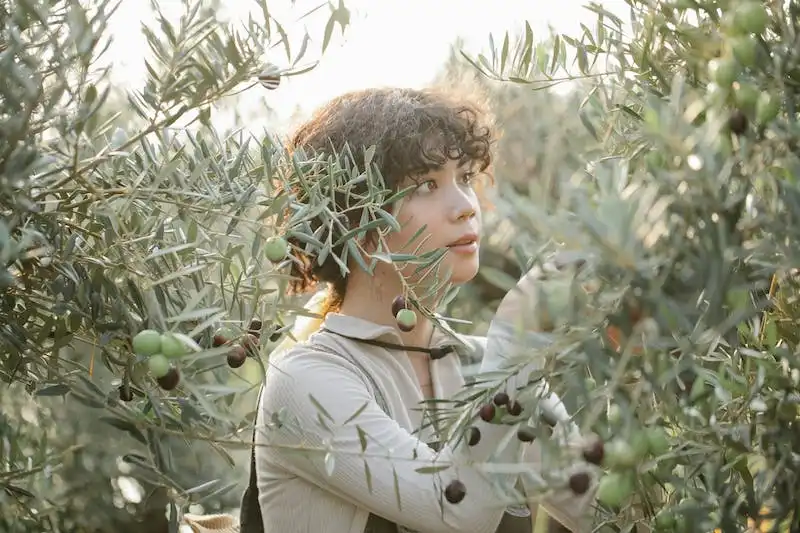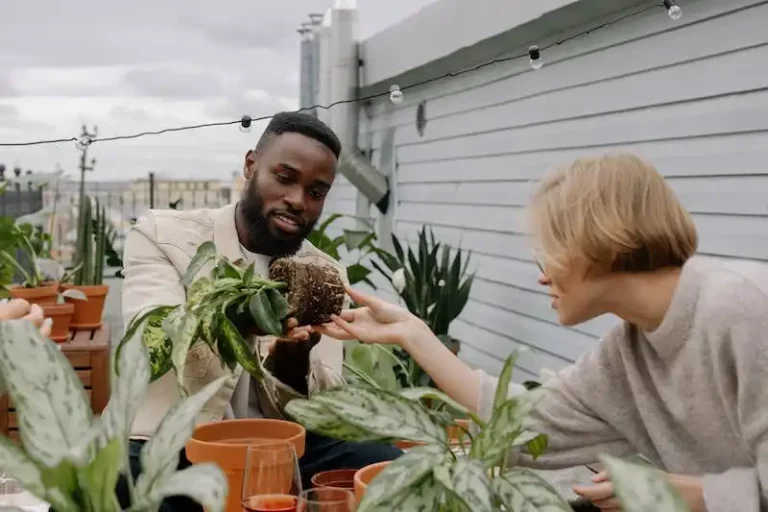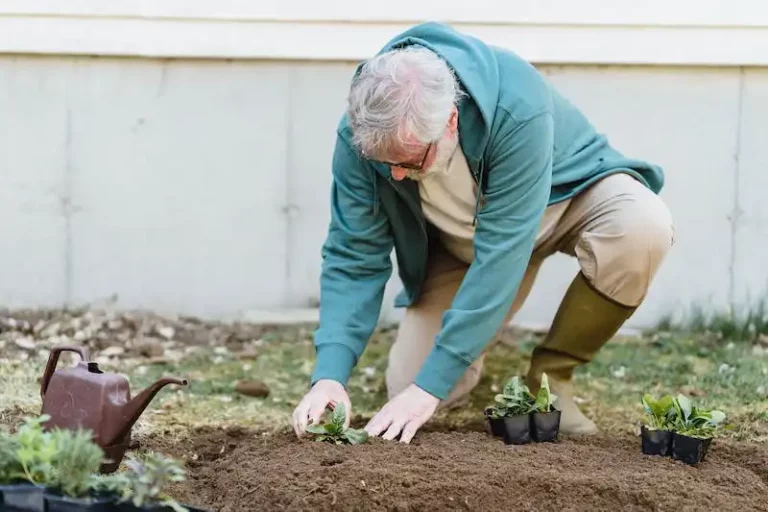When it comes to houseplants, there are some that can be overwhelming in size and fill up an entire room, while others are small enough to fit on a windowsill. The Peperomia Radiator Plant and Desert Privet Plant fall somewhere in between, making them the perfect choice for those who want a plant that is not too small, but not too large either.
One of the main benefits of these plants is that they are easy to care for and can thrive in indoor environments. They are both known for their thick, succulent leaves that can store water, which means they can go longer between waterings. However, it is important to note that overwatering can lead to root rot, so it is best to let the soil dry out between waterings.
Another unique aspect of these plants is their appearance. The Peperomia Radiator Plant has heart-shaped leaves that are dark green and marbled with shades of silver and cream. The Desert Privet Plant, on the other hand, has super-fuzzy leaves that are light green in color. Both plants have cascades of small flowers that bloom above the foliage, adding a vibrant touch to any space.
If you’re looking to add some greenery to your home, both the Peperomia Radiator Plant and Desert Privet Plant are great options. They are easy to care for and can thrive in a variety of light conditions, from bright, indirect light to lower light levels. Plus, they are not known to attract pests, so you can enjoy their beauty without any worries.
Whether you’re a newbie to houseplants or an experienced plant parent, these plants are sure to bring joy to your home. So why not pick one up today and let its unique beauty brighten up your space?
How to Grow and Care for Peperomia Plants
Peperomia plants are commonly sold as houseplants because they are easy to grow and care for. Everyone can enjoy the beautiful foliage and unique appearance of these plants, making them a popular choice for indoor gardens.
When it comes to watering, peperomia plants prefer to be kept on the drier side. Overwatering can lead to mushy stems and root rot, so it’s best to avoid watering too frequently. Allow the soil to dry out between waterings and make sure the pot has good drainage to prevent any problems.
These plants can tolerate a wide range of humidity levels and temperatures, but they do best in environments with moderate humidity. If the humidity is too low, you may notice the leaves beginning to curl or the stems turning yellow. Placing the plant on a tray of watered pebbles or misting it regularly can help increase humidity.
Peperomia plants have thick, see-through stems and smooth or slightly textured leaves. They grow well in well-drained soil and can be placed in a wide range of light conditions, although they prefer bright, indirect light.
Pruning is not necessary for these plants, but if you notice any yellow or discolored leaves, it’s best to remove them to keep the plant looking healthy. You can also pinch back the tips of the plants to encourage bushier growth.
If you’re growing peperomia plants indoors, it’s important to watch for signs of overwatering. If the leaves begin to turn mushy or the roots become waterlogged, it’s a sign that you’re watering too much. Adjust your watering schedule accordingly to keep the plants happy and healthy.
Peperomia plants come in various species, including the Peperomia obtusifolia, Peperomia rotundifolia, Peperomia sandersii, and Peperomia columellaris. Each species has its own unique characteristics and care requirements, so make sure to do your research on the specific species you have.
In conclusion, peperomia plants are easy to grow and care for. With the right watering schedule and proper humidity levels, these plants can thrive indoors. Whether you choose the Peperomia Radiator Plant or the Desert Privet Plant, you can enjoy the beauty of peperomia plants in your home or garden.
Watch Now How to Grow and Care for a Peperomia Plant
If you’re looking for an easy-to-care-for houseplant with unique foliage, the Peperomia plant is a perfect choice. With its variegated and thin leaves, the Peperomia plant is known for its vibrant colors and interesting leaf patterns. In this article, we will learn how to grow and care for a Peperomia plant.
Light: Peperomia plants thrive in bright, indirect light. They can also tolerate lower light conditions, although their growth may slow down. Avoid exposing them to direct sunlight, as it can cause their leaves to burn.
Temperature: These plants prefer temperatures between 65-80°F (18-27°C). They can tolerate lower temperatures, but cold drafts should be avoided, as it can cause damage to the plant.
Watering: Peperomia plants do not like to be overwatered. Allow the top inch of soil to dry out before watering again. Make sure the pot has drainage holes to prevent overwatering. Water thoroughly and allow any excess water to drain away.
Soil and fertilizer: Peperomia plants prefer a well-draining potting mix. A mix of peat moss, perlite, and sand works well. Fertilize the plant once a month during the growing season with a balanced liquid fertilizer diluted to half-strength.
Repotting: Peperomia plants have shallow root systems and do not require frequent repotting. Repot every 2-3 years or when the pot feels too small for the plant. Use a pot that is one size bigger and fill it with fresh potting mix.
Pests: Peperomia plants are relatively pest-free. However, they can occasionally attract mealybugs or spider mites. Regularly inspect the plant for any signs of pests, and treat them promptly if necessary.
Common Care Issues: If a Peperomia plant is getting too much light, its leaves may turn yellow or become discolored. If the leaves start to wilt, it may be a sign of overwatering. Adjust the light and watering accordingly.
Unique Types: There are many unique types of Peperomia plants, such as Peperomia obtusifolia, Peperomia argyreia (watermelon peperomia), and Peperomia caperata (emerald ripple peperomia). Each variety has its own unique foliage and care needs.
Final Thoughts: Whether you’re a beginner or an experienced plant grower, the Peperomia plant is an excellent choice. With its unique foliage and easy care requirements, it will add a touch of beauty to any home. So, watch the video to learn how to grow and care for a Peperomia plant!
Sources: This article is based on personal experience and research conducted by the author.
Peperomia Plant Care
Peperomia plants are a popular choice for indoor plant enthusiasts due to their unique appearance, slow growth, and easy-care requirements. Here are some tips to help you care for your Peperomia plant:
- Watering: Peperomias have thick, fleshy leaves that store water, so they are quite tolerant of occasional under-watering. In general, water your Peperomia plant when the soil is dry to the touch. During the spring and summer months, increase the frequency of watering, but be sure to let the soil dry out between waterings to avoid overwatering.
- Light: Peperomias prefer bright, indirect light. They can tolerate some direct sunlight in the morning or late afternoon, but intense or prolonged exposure to direct sunlight can damage their leaves.
- Temperature and Humidity: Peperomia plants thrive in average room temperatures between 65-80°F (18-27°C). They prefer moderate to high humidity, so misting the leaves or placing the plant on a tray with water-filled pebbles can help increase humidity levels.
- Soil: Peperomias prefer a well-draining soil mix. A mixture of potting soil, peat moss, and perlite or sand works well for Peperomia plants. Avoid using heavy or compacted soil that can retain too much moisture and lead to root rot.
- Fertilizer: Peperomia plants have relatively low fertilizer needs. During the spring and summer months, you can fertilize your Peperomia plant with a balanced, water-soluble fertilizer diluted to half-strength. Skip fertilizing during the winter months when the plant is in a dormant phase.
- Repotting: Peperomias have a slow growth habit and typically do not need to be repotted often. Repotting is only necessary when the plant outgrows its current pot or if you want to refresh the soil. When repotting, choose a pot that is slightly bigger than the current one and use fresh potting soil.
- Pests and Problems: Peperomia plants are generally pest-resistant. However, they can occasionally be affected by common houseplant pests such as mealybugs or spider mites. If you notice any signs of pests, isolate the affected plant and treat it with an appropriate pest control solution.
Peperomia plants come in a variety of leaf shapes, sizes, and colors, making them a popular choice for plant enthusiasts. Some popular varieties include Peperomia obtusifolia (also known as baby rubber plant), Peperomia watermelon, Peperomia argyreia (watermelon peperomia), and Peperomia sandersii (watermelon begonia). These plants are typically sold as potted specimens and can grow up to a foot tall.
In summary, caring for a Peperomia plant is relatively easy as long as you provide it with the right conditions. Remember to water the plants when the soil is dry, place them in bright, indirect light, and avoid overwatering or exposing them to direct sunlight. With a little care and attention, your Peperomia plant will thrive and add a touch of unique beauty to your indoor space.
FAQs
- Q: Are Peperomia plants toxic to pets?
A: Peperomia plants are generally considered non-toxic to cats and dogs, but it’s always a good idea to keep an eye on your pets and prevent them from chewing on the leaves, as individual sensitivities may vary.
- Q: How often should I water my Peperomia plant?
A: Water your Peperomia plant when the top inch of the soil feels dry. It’s better to underwater than overwater, as overwatering can lead to root rot.
- Q: Can I propagate Peperomia plants from cuttings?
A: Yes, Peperomias can be easily propagated from stem cuttings. Simply cut a healthy stem below a leaf node, remove the bottom leaves, and place the cutting in a container with moist soil. Keep the soil lightly moist until roots develop.
- Q: Why are the leaves of my Peperomia plant turning yellow and falling off?
A: Yellowing leaves and leaf drop can be a sign of overwatering or underwatering. Ensure that you are watering your Peperomia plant appropriately and adjust your watering schedule accordingly.
Light
The Peperomia Radiator Plant and Desert Privet Plant both thrive in bright, indirect light. Placing them near a window where they will receive ample sunlight, but not direct sunlight, is the best choice. Direct sunlight can scorch the leaves, while too little light can result in weak growth and yellowing foliage.
Both of these plants can tolerate low light conditions, but they will not grow as vigorously or produce flowers like they would in brighter light. If the plants are not receiving enough light, you may notice elongated stems and pale leaves. In this case, try moving them to a location with more light or consider using grow lights to supplement the natural light.
It’s important to note that variegated varieties of these plants require more light than their solid green counterparts. The variegated leaves have less chlorophyll, which is needed for photosynthesis, so they need more light to compensate for this. If you have a variegated Peperomia Radiator Plant or Desert Privet Plant, be sure to give it plenty of bright, indirect light to keep it healthy and vibrant.
When it comes to the specific lighting needs for these plants, the Peperomia Radiator Plant prefers bright, indirect light but can tolerate some direct morning or evening sun. On the other hand, the Desert Privet Plant prefers bright, indirect light and should be protected from direct sunlight.
If you notice that the leaves of your plants are turning yellow and falling off, it may be a sign of too much light. In this case, move the plant to a location with less intense light. On the other hand, if the leaves are becoming thin and elongated, it may be a sign of not enough light. Move the plant to a brighter location if this is the case.
Overall, the Peperomia Radiator Plant and Desert Privet Plant are easy-going when it comes to lighting conditions. They can adapt to a wide range of light levels, as long as they are not subjected to extremes. As a general rule, it’s best to provide them with bright, indirect light and avoid direct sunlight.
To keep your plants looking their best, make sure to rotate them periodically to ensure even growth and to prevent them from leaning towards the light source. If you notice any discolored or infected leaves, remove them promptly to prevent the issue from spreading to the rest of the plant.




